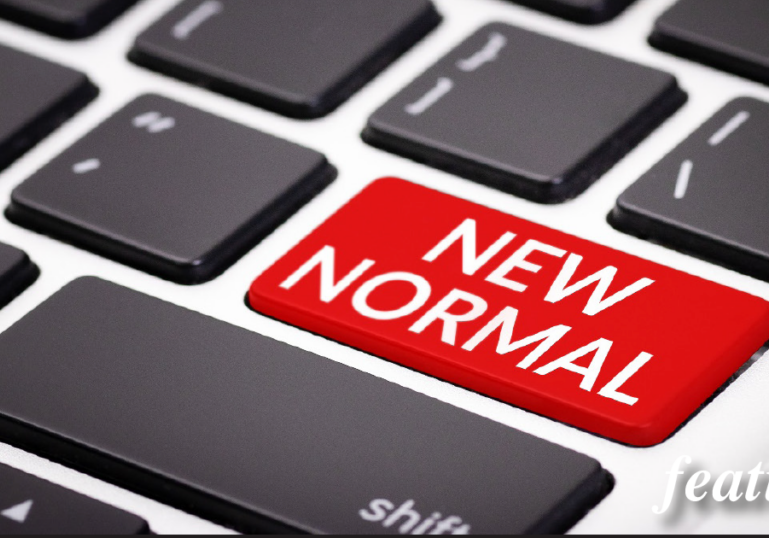The idea of a metaverse setting has existed for some time. Still, its significance has become more pronounced in the present era when individuals are compelled to work from their personal locations because of the pandemic. Although remote work has enabled employees to work from their residences, it has also brought attention to the constraints of conventional office setups.
What is a Metaverse Environment?
The metaverse atmosphere refers to a virtual realm where individuals can use avatars to communicate and engage in various tasks. The development of sophisticated technologies such as virtual reality, augmented reality, and artificial intelligence has resulted in the metaverse environment advancing quickly, creating novel opportunities for cooperation and interaction.
Microsoft has announced that it intends to combine its virtual and augmented reality (VR/AR) platform Mesh with Teams and has suggested that it may create immersive spaces in the messaging app in the future. In addition, Meta has developed Horizon Workrooms, which allows users to hold meetings using Oculus headsets.

Figure: Team working together in a Meta Horizon workroom
Application in Human Resources Business Functions
Recruiting
Metaverse can enhance the recruiting process by providing candidates with a realistic preview of the job and the work environment. By using virtual and augmented reality, candidates can experience a more immersive and interactive job preview, making assessing their fit for the role more manageable. Additionally, virtual reality can conduct virtual interviews and assessments, create a more inclusive recruitment process, and identify the most qualified candidates. This will also help make a better first impression and reduce the feeling of isolation that remote workers can sometimes experience.
Onboarding
Metaverse can allow new hires to learn about the company and their role more immersive and engagingly, even when they are not physically present at the office. For example, a virtual onboarding program could provide a 360-degree tour of the office, introduce new hires to key team members and departments through interactive avatars, and allow them to practice critical job tasks in a simulated environment. This can help new hires feel more connected to the company and their role, even when working remotely.
Performance Management
Metaverse can enhance performance management by providing more accurate and objective employee performance assessments. Objective and data-driven performance evaluations can be created using sensors and data analysis. These technologies can provide more detailed and unbiased employee performance reviews, allowing for more fair and objective assessment. Companies can also create simulations that measure employee skills and knowledge in a realistic environment, making it easier to identify areas for improvement and provide targeted training and development opportunities.
Compensation and Benefits
Metaverse can enhance compensation and benefits programs by providing employees with a more engaging and interactive experience. By using virtual and augmented reality, companies can create simulations that allow employees to explore and interact with different benefit options, making it easier to understand the available benefits and make informed decisions to maximize their benefits packages.
Succession Planning
Organizations must identify high-potential employees and assess their readiness for leadership roles. Simulations in Metaverse can provide employees with realistic scenarios to practice their leadership skills and receive feedback, allowing for more effective leadership development. Augmented reality can also provide real-time guidance and support to employees as they practice leadership skills, allowing for continuous improvement. It can also facilitate knowledge transfer between employees, especially when experienced employees are retiring or leaving the company. In Metaverse, experienced employees can capture their knowledge and experience, which can be shared more engagingly and interactively with other employees.
Time and Absence
Tracking employee time and attendance is an essential HR function. The metaverse can help automate and streamline the time-tracking process. Employees can use their virtual avatars to clock in and out of work, eliminating the need for physical timecards. Virtual reality technology can also help manage real-time scheduling and shift changes.
Metaverse can help simplify the process of reporting absences and requesting time off through virtual portals. Managers can approve or deny requests and make real-time schedule changes, ensuring the organization is always fully staffed.
Cost Analysis for Implementation
Generally, implementing the Metaverse environment for HR business functions mentioned above can involve high upfront costs, including the hardware and software required to create and operate the virtual workspace.
Although it is expected that, over the long term, a metaverse environment can provide cost savings by reducing the need for physical office space, transportation costs, and other expenses associated with maintaining a traditional workplace. It is also expected to increase productivity and improve communication and teamwork. In addition, using technology, such as virtual and augmented reality, can also provide employees with better access to information and resources, allowing them to complete their tasks more efficiently.
Total costs to implement will likely vary depending on the specific needs and goals of the organization. Therefore, it would be best for organizations to conduct a cost-benefit analysis to determine the potential return on investment for implementing a metaverse for HR business functions.
Limitations & Challenges
While a metaverse environment can offer numerous benefits for organizations, there are also several limitations to consider:
- Technical challenges: Implementing a metaverse environment requires advanced technology infrastructure and expertise, which can be costly and time-consuming to set up. Additionally, technical connectivity, bandwidth, and latency challenges may affect the user experience.
- Accessibility: Not all employees may have the necessary hardware or software to access a metaverse environment, which can limit its use and effectiveness. Moreover, employees with disabilities may face additional challenges in accessing and using virtual workspaces.
- Security and privacy: A metaverse environment can pose security and privacy risks, particularly if sensitive data is being shared or stored in the virtual workspace. Organizations must ensure that they have robust security protocols to protect their data and systems.
- Limited applicability: Not all types of work can be done effectively in a virtual environment. Specific industries or job roles may require physical presence or specialized equipment, making it challenging to implement a metaverse environment for these employees.
- Cultural resistance: Some employees or leaders may resist the idea of virtual work, preferring the familiarity and social interaction of a physical office. Changing an organization’s culture can be challenging to embrace a new working method.
Conclusion
In conclusion, we went through several use cases showing that a metaverse environment can significantly benefit organizations and employees. While it may not be suitable for all types of employees, it can provide a viable alternative for those who can work in a virtual space. Therefore, companies looking to adapt to the changing work environment must conduct a cost-benefit analysis and consider investing in a metaverse environment to improve their productivity, reduce their carbon footprint, and foster a more inclusive workplace culture.



